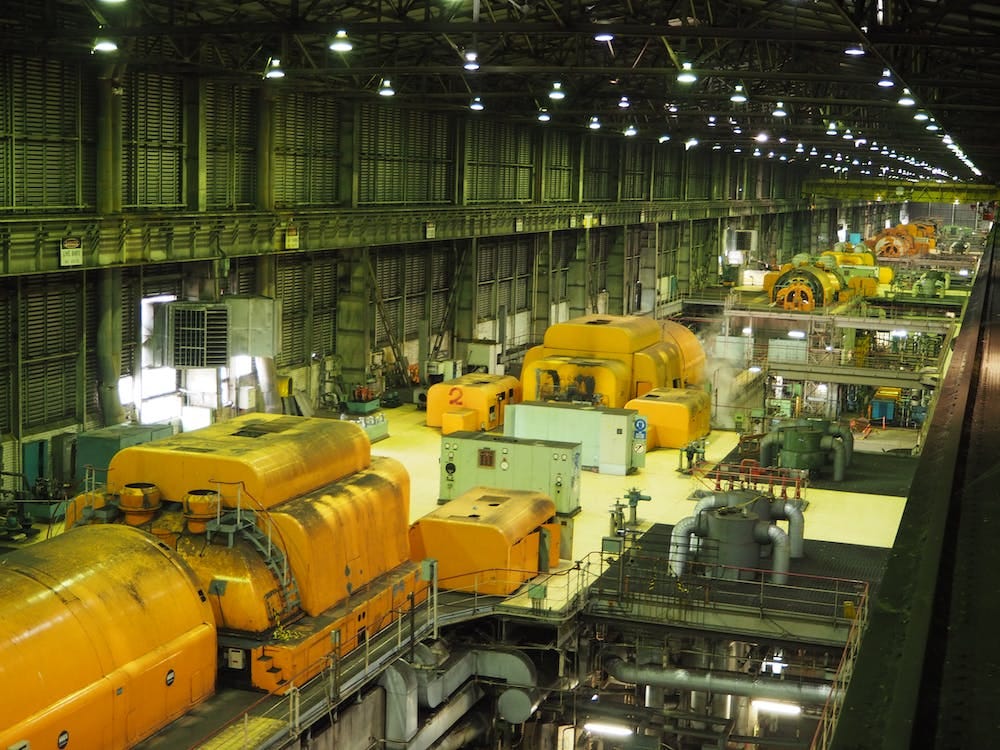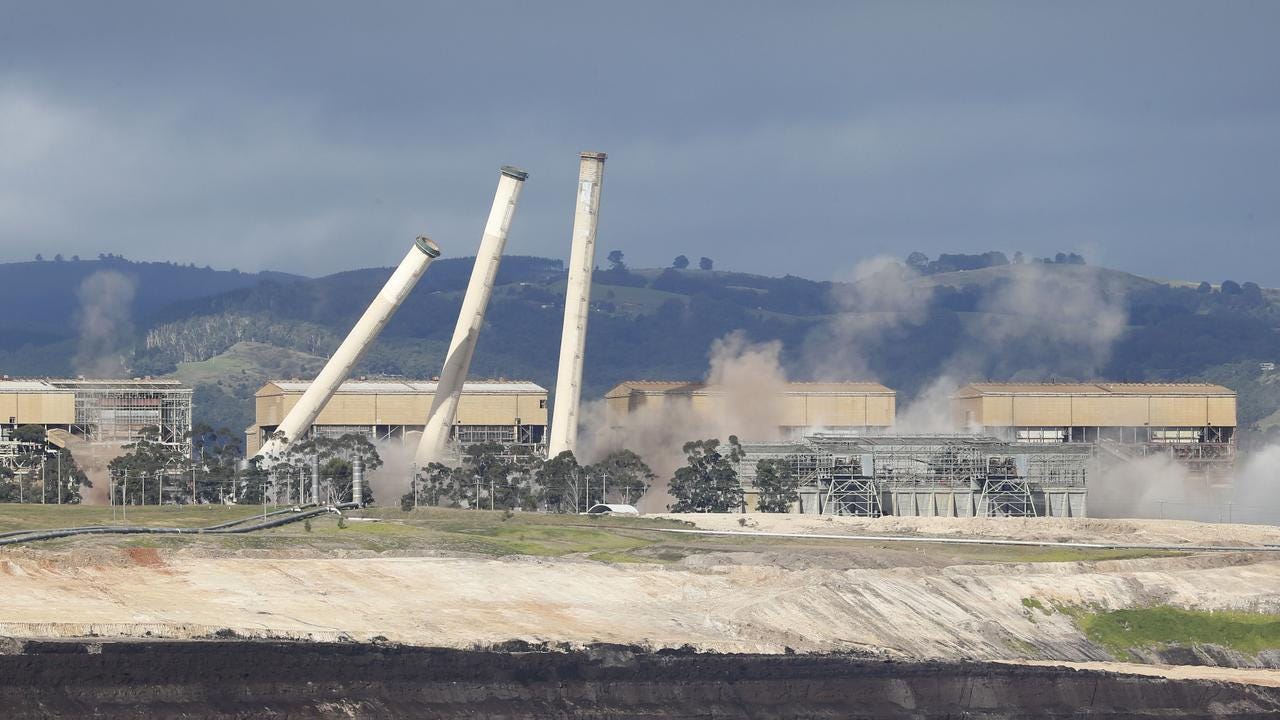Under Daniel Andrews, the Victorian Labor government swept into power for a record third consecutive term in November 2022, apparently on the back of their announcement of a revived state-owned electricity commission.
However, while we wait for more substantive policy announcements, the SECV 2.0 has become something of a Rorschach test — whether you see pro-renewables investment, lower electricity prices and an anti-monopoly stance; or wasted government money, impossible to keep promises and market interference largely depend on which side of politics you identify.
How did we get here
The simplified history of Australian electricity grids is something like this — at the turn of the nineteenth century, private companies in the capital cities established power stations in inner suburbs primarily to power electric trams; in the inter-war period, state governments established state-owned electricity commissions and rapidly electrified the nation through the middle part of the twentieth century; and in the 1990s, the wave of neoliberal reforms that swept the western world lead to privatisation of these systems and the markets we have today.
In Victoria the state government operated company was the State Electricity Commission.1 The SEC was formed in the 1918 after Sir John Monash, fresh from WWI, was tasked with figuring out how to utilise Victoria’s vast lignite reserves, more commonly known as brown coal, and sometimes known as calorific poop,2 to generate power. Monash and Hyman Herman headed over to Germany to learn about the technological developments required to combust brown coal.3
The SECV grew throughout the twentieth century to be a significant force — it was the dominant employer in the coal-rich the Latrobe Valley and had the power to literally create, manage and destroy an entire town; but by the 1980s there were significant budget pressures facing the state of Victoria.4 This led to calls to reign in the spending and improve the efficiency of the SECV. The Liberal government led by Jeff Kennett did the deed and privatised the SECV in 1994-5.
Other states followed suit in 2000s and we now have a connected electricity grid on the east coast which is a market-based system dominated by private companies and cobbled together largely from the generation and transmission assets previously built by the various state governments.5
The system is not entirely privatised — the Tasmanian government-owns Hydro Tasmania, which in turn owns and operates almost all of the generation in Tasmania as well as the electricity retailer Aurora. The Queensland government owns a significant proportion of the generation assets and Queenslanders living outside of the south east effectively must purchase electricity from the government owned retailer Ergon Energy. And the enormous Snowy Hydro (which encapsulates the Snowy Hydro scheme as well as several gas-fired turbines) is owned and operated by the eponymous federal government entity which also operates the Red and Lumo retailers.
In Western Australia, the market is effectively regulated with the government-owned Synergy managing generation and retail for all residential customers and a majority of business customers. There is some limited competition with a few privately owned generators and some retailers for ‘contestable’6 customers.
This only relates to the role various governments play in directly operating customer-facing aspects of the electricity market, and not the very significant and important roles played in regulating and governing the entire system itself.7
The Announcement
Given that there is still a significant amount of government involvement in the generation and sale of electricity across the NEM, it was somewhat surprising to see the Andrew’s Labor government seeking reelection in 2022 announce that it would be restoring/restarting the SECV.8
This was seemingly met with a lot of community support, and after winning reelection the government claimed it as key policy that contributed to the victory and immediately got to work making it a thing.9
Much of the excitement mostly seems to be part of a broader current trend of anti-privatisation, which is reversing the neoliberal reforms of the late twentieth century — the American antitrust writer Matt Stoller has written extensively about the changing tides in Washington. This excitement also dovetails with the fact that the big three privately-owned gentailers (generation and retailing companies, aka AGL, Origin and Energy Australia) have something in the order of 80% of the market locked up in both generation and electricity (and gas) retailing — these companies are big and bureaucratic and not exactly benevolent, and they cop a not unwarranted amount of distrust from a wary public, as well as consistently negative Net Promoter Scores.10
So, why? And what exactly will the SECV achieve? And how will they achieve it?
The Policy
Well, the announcement was vague on details. The only three clear policy announcements to date have been:
Revitalising the Latrobe Valley with a SECV headquarters,
Opening more skills training for clean energy jobs, and
Using the SECV to drive the state’s aggressive net zero ambitions (95% renewable by 2035).
In order to achieve these goals all options are apparently on the table.
Broadly, the government has announced that they want cheaper and greener electricity for Victorians.
One way they could achieve this is by accelerating new generation by underwriting it. This could take the form of large scale power purchase agreements,11 which are already very common in the industry, or by providing low interest loans or similar financial instruments. The government could also choose to build its own assets either entirely or via public-private partnerships, but this creates a risk of deterring private investment.12
With a scarcely believable pipeline of 55 GW13 of either committed or publicly announced projects in Victoria alone, it’s not clear that a lack of investment in new generation is the problem. What’s more challenging is the actual connection process, and given there are technical hoops which must be jumped through it’s not clear how the Victorian government could speed this up.14
The SECV could be focussed on a specific type of generation. For example, using government support to help kickstart the development of offshore wind. Victoria has an offshore wind target, but to date, there hasn’t been a single offshore wind project commercialised in Australia.
The other way the government could provide cheaper electricity to Victorians would be to establish their own retailer and provide subsidised electricity rates (presumably in conjunction with broad investment in new renewables projects). But it’s worth noting that this strategy alone might run counter to the state’s aggressive net zero goals — decreasing the cost of electricity could lead to general increases in electricity consumption while the grid still has a high carbon emissions intensity, pushing the net-zero targets back. In addition, offering cheaper electricity would again risk crowding out private players, who play an important role in innovating and competing to keep retail costs down.
What is clear at least, is that the Victorian government is serious and committed to this policy and has appointed a panel of heavy hitters to guide the reborn SECV. So the government is full steam ahead… even if no one quite knows what the plan is.
Things Happen
The future of electric aviation looks like something from Call of Duty.
The New York Times published an analysis suggesting that big electric pickups mightn’t be so green, which, uh, duh? (Although they also missed the chance to discuss the role rooftop solar and home charging plays here, which is significant).
Labor’s Safeguard Mechanism is stuck in policy purgatory without support from The Greens who want to see no new gas or coal development approvals.
No word on Florence, the Snowy Hydro tunnel boring machine which got stuck on 11 February. Currently Speaking’s stance has been upgraded from concerned to candlelit vigil.
Typically referred to in full as the State Electricity Commission of Victoria.
On account of its low quality, distinct brown colour and ability to stick to just about any surface.
But, legitimately, brown coal is wet calorific dirt and requires special treatment in order to burn.
Something like an estimated $30 billion in debt with a further $20 billion of looming unfunded defined benefits payments.
A quick side note here, that to date, most of the largest generation assets in the electricity system were exclusively built with government money.
Generally large commercial and industrial businesses.
Which, is yeah, rather a big deal.
They’ve gone further in fact, promising to enshrine the SECV in legislation making it very difficult to re-privatise in the future.
To be fair though, the current Victorian Liberals are so utterly hopeless, it’s not entirely clear that the decisive Labor victory was because of policy announcements or Liberal own goals or just a sheer lack of choice.
NPS pitches the question “how likely would you recommend this service to a friend?” Overall Consumer sentiment fairs poorly for electricity and gas retailers compared their shining counterparts in telecomms and banking… yikes.
PPAs are agreements with a renewable generator where the party buying the PPA agrees to take a certain quantity at an agreed price. Having a PPA in place shores up the financial certainty around a project and makes it easier to get finance approval from the bank.
And probably shitty outcomes for taxpayers.
Ten times the average demand on Victorian grid on an average day.
A challenging and important topic for another day.






